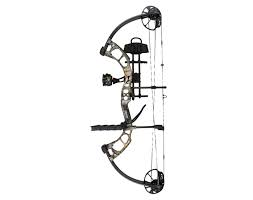- Screen Colours:
- Normal
- Black & Yellow
There are as many types of bows as there are types of archery. In most cases if you ask an archer why they shoot a particular bow type or style, the answer will be “Because I want to”.
Most archers who have been shooting for a while will own a number of bows, and in many cases, these will be of different types. There are examples of most bow types available to suit all pockets, with entry level equipment costing less than £100, but if you can afford it there are also examples costing multiple thousands of pounds.
Whichever type of bow you choose to shoot, there is normally a category or class which you can fit into to shoot competitively
Traditional
Traditional archery is archery in its original form. Beautiful bows emphasising natures raw materials. No gadgets. No aids. Just your skill with a bow and arrow.
Recurve
If you want to be Olympic champion, you’ve got to look at recurve bows. Still the most popular style of archery in the UK, recurve archery is accessible by people of all abilities and is usually the first bow an archer will learn on.
be Olympic champion, you’ve got to look at recurve bows. Still the most popular style of archery in the UK, recurve archery is accessible by people of all abilities and is usually the first bow an archer will learn on.
And what’s even better, is there are bows to match all budgets, sizes and strengths! Olympic Recurve Bow - as the name suggests this is the type of bow used by archers competing in the Olympics.
Typically, the limbs (The springy bits at the top and bottom) can be removed from the riser (Handle) making it a take-down bow. In most cases the limbs will fit to the riser using the IFL (International Limb Fitting) standard. This standard, which has been adopted my most major manufacturers of archery equipment, means that archers can build bows using risers and bows from different manufacturers.
Risers and limbs come in different lengths. Mixing these allows an archer to build a bow of the correct overall length for them. Limbs also come in different draw weights (How much weight you’re holding when you pull back the string). Olympic archers will typically draw 35lb to 50lbs.
In the recurve bow class, the bow is fitted with a number of add on bits. A sight to assist with aiming. An arrow rest to assist arrow clearance on release. A draw length check or “clicker” to allow the archer to measure how far they pull back the string to ensure this is the same every shot. A Long rod (Rod sticking out the front with weights on) and side rods (Rods sticking out the side, also with weights on).
The purpose of all these rods and weights is to give the bow stability and to help ensure it stays stable when an arrow is released. If you choose to shoot yours without the sight etc. then you’re in the world of bare bow archery.
Compound
Fondly referred to as ‘the dark side’. Usually by those that have not  yet ‘seen the light’. Pretty much the “state of the art” as far as bow design is concerned, the compound bow was invented in the 1960s. Compound bows are designed for maximum accuracy and are the latest development in archery equipment.
yet ‘seen the light’. Pretty much the “state of the art” as far as bow design is concerned, the compound bow was invented in the 1960s. Compound bows are designed for maximum accuracy and are the latest development in archery equipment.
The main difference between a compound bow and a recurve bow is the wheels attached to each limb. The wheels at the top and bottom are actually cams which make the draw weight reduce through the draw. With a recurve bow at full draw, the archer is holding the full weight on their fingers. With a compound bow at full draw, due to the action of the cams, the archer will only be holding around 20% of the full weight. This allows the archer to hold the bow at full draw for much longer ensuring much more time for aiming.
Compound is the most accurate bow style. Release aids and scopes add to the accuracy. Arrow speed is faster giving a flatter trajectory. The compound bow division is hugely popular and depends more on skill than physical strength.
But don't be fooled into thinking this makes winning easier. Your competitors will have these same advantages too!
Japanese Yumi Bow
As can be seen from the picture these are somewhat disproportionate looking bows. Originally used by Samurai warriors they are now used in a very stylised form of archery, where it is more the style that is important rather than the accuracy.
picture these are somewhat disproportionate looking bows. Originally used by Samurai warriors they are now used in a very stylised form of archery, where it is more the style that is important rather than the accuracy.
Crossbows
With a history dating back over 2000 years, crossbows continue to evolve and thrive today.
Our club does not allow crossbows.
